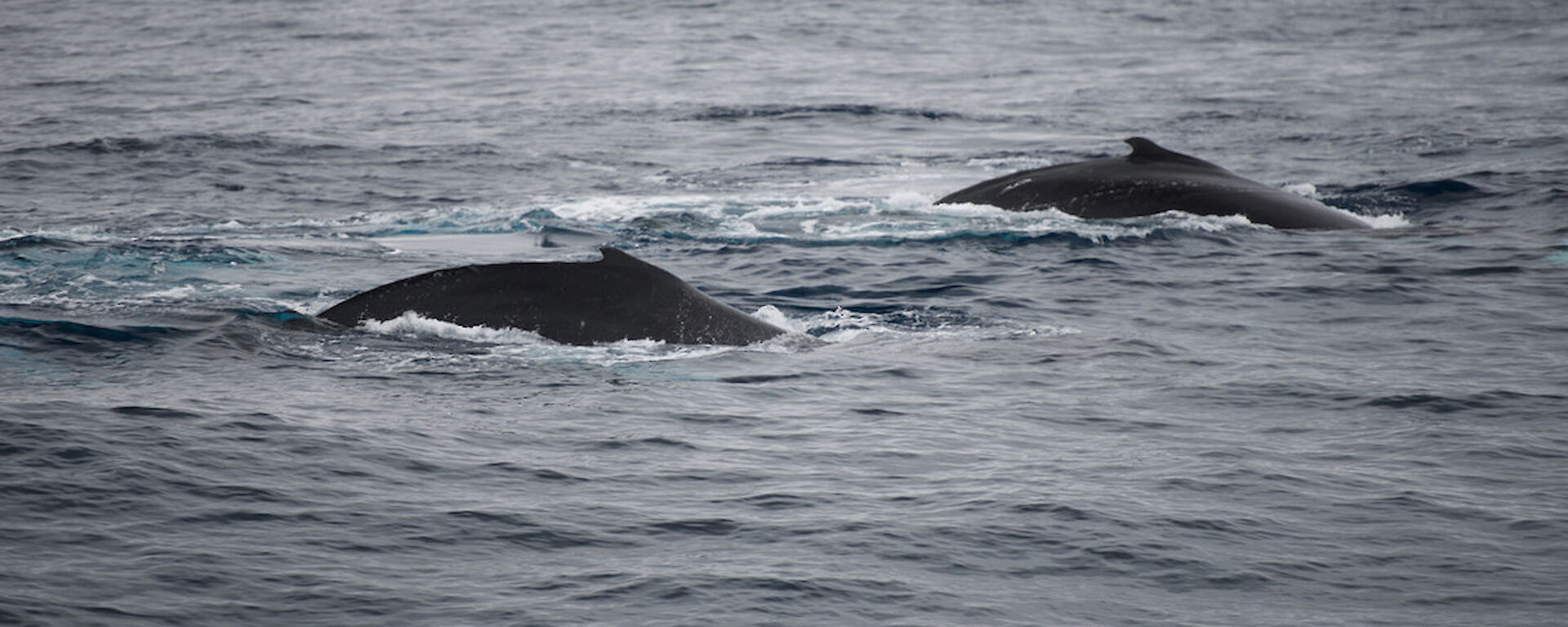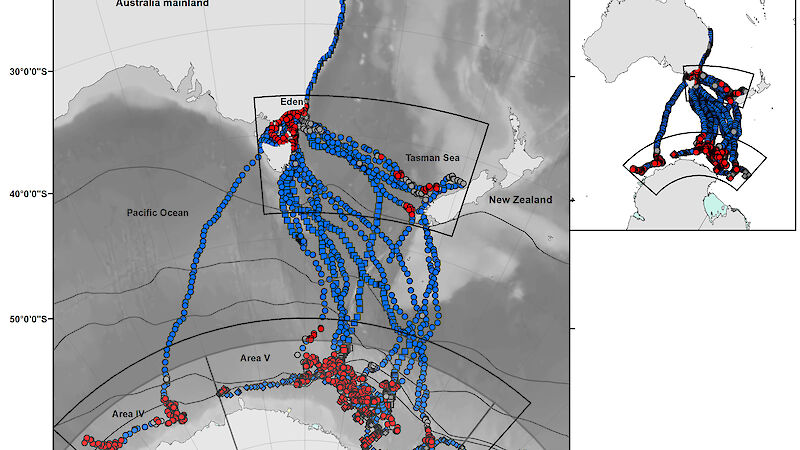Satellite tracking data has identified new warm water feeding areas for south-bound humpback whales en route to the krill rich seas of Antarctica.
A paper published in Scientific Reports today, examines the movements of 30 humpback whales tracked via satellite tags over three consecutive summers from 2008/09.
Australian Antarctic Division marine mammal scientist and the paper’s lead author, Dr Virginia Andrews-Goff, said the research is the first to examine the foraging habits and migration path of East Australian humpbacks.
“For the first time we have been able to see the varied routes East Australian humpbacks take on their migration to Antarctica, some of which were unknown until now,” Dr Andrews-Goff said.
“The satellite data shows us they might either travel east via New Zealand, south via Tasmania and west via the Pacific Ocean.
Scientists have also found the humpback whales feed more during their migration than previously thought, spending time foraging in warmer temperate waters on their way to Antarctica
“As the whales migrate they are stopping for up to 35 days to forage — either off the New Zealand coast, in Bass Strait and off the east coast of Tasmania,” Dr Andrews-Goff said.
“Traditionally, humpbacks were thought to employ a feast and famine approach to migration, with the whales feasting in Antarctica and then fasting as they migrate north to their breeding grounds, give birth and feed their calves as they migrate south again.”
The paper also examines the characteristics of the Antarctic feeding ground, which scientists believe could be responsible for the strong recovery of the population after whales were hunted to near extinction in the 1950s and early 1960s.
“The whales time their arrival for when the ice is retreating rapidly towards the continent, and the data shows they concentrate their foraging where the ice was located two months prior,” Dr Andrews-Goff said.
“We can see that the whales move with the ice as it melts and retreats, and it’s this melt which releases new production and triggers the accumulation of Antarctic krill, the primary food source for the whales.”
The research will help inform whale management and conservation policy.



